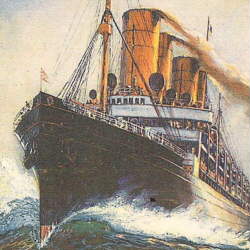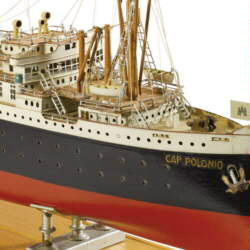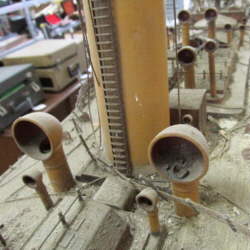The Ship
Launched on 1 December, 1906, the Kronprinzessin Cecilie was the last in a quartet of luxurious, four-funneled liners
built for the Norddeutscher Lloyd at the Vulcan Works shipyard in Stettin. The first of these 700-foot vessels was the Kaiser Wlhelm der Grosse of 1897. Though soon to be overshadowed by Cunard’s Lusitania and Mauretania, and the White Star Line’s Olympic and Titanic, the Kronprinzessin Cecilie symbolized Germany’s unrivaled supremacy on the Atlantic at the turn of the century. Some believe the term "ocean greyhound" was coined to describe the Lloyd's four fliers. |
The MakerGebrűder Fleischmann of Nuremberg was founded in 1887 and began producing tin toys bearing the Fleischmann name in 1898. The firm grew rapidly from 25 employees in 1900 to 60 in 1910. It was during the same year that Fleischmann was awarded a gold medal for excellence at the Brussels International Exposition where a model of the Kronprinzessin Cecilie served as the centerpiece of the company's display. In addition to water related toys Fleischmann also manufactured scale models for steamship companies -though no documentation regarding this line of production survives.
|
The ModelIn January of 2013 images of the battered, ghost-like remains of a 7-foot-long tin steamship model appeared at an online auction site. Many questions arose and lively debate ensued. Who was she? Her two-funneled profile did not seem to match any ocean liner of her proportions. Who made her? Though having the appearance of a scale model she also exhibited toy-like qualities. The German toy maker Märklin was a likely contender. Who had allowed what was obviously once a magnificent, detailed work of art to deteriorate to such a degree? Finally, was she worth saving?
|


